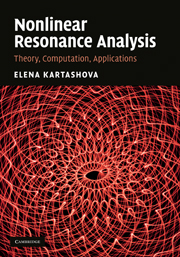5 - Mechanical playthings
Published online by Cambridge University Press: 06 December 2010
Summary
Can it be that you don't want to sit over a retort like Faust, in hopes that you'll succeed in forming a new homunculus?
M. Bulgakov Master and MargaritaPendulums have been dealt with in scientific literature for more than 400 years – since Galileo Galilei, according to legend, became fascinated by the swinging back and forth of suspended candelabra in the cathedral of Pisa and discovered the phenomenon of resonance. Since then the pendulum has been used both as an interesting object in itself and as a tool for investigating various physical phenomena. For instance, Newton in his Principia developed the theory of pendulum motion and used it for computing velocities of balls after colliding. Two coupled linear pendulums or one elastic (or spring) pendulum are often used for discussing the notion of resonance. Driven pendulums demonstrate resonance at particular frequencies, etc. (see [166] for an easy and fascinating exposition). Quite interesting simulations of wave dynamics by means of a two-dimensional array of masses connected by springs have been recently presented in [60]. Such characteristic phenomena of fluid mechanics as wave propagation, diffraction, interference, etc. are visualized as sequences of snap-shots of simulations with connected springs.
Below we regard linear and elastic pendulums as suitable mechanical devices for illustrating some notions and results discussed in the previous chapters.
Information
- Type
- Chapter
- Information
- Nonlinear Resonance AnalysisTheory, Computation, Applications, pp. 130 - 143Publisher: Cambridge University PressPrint publication year: 2010
